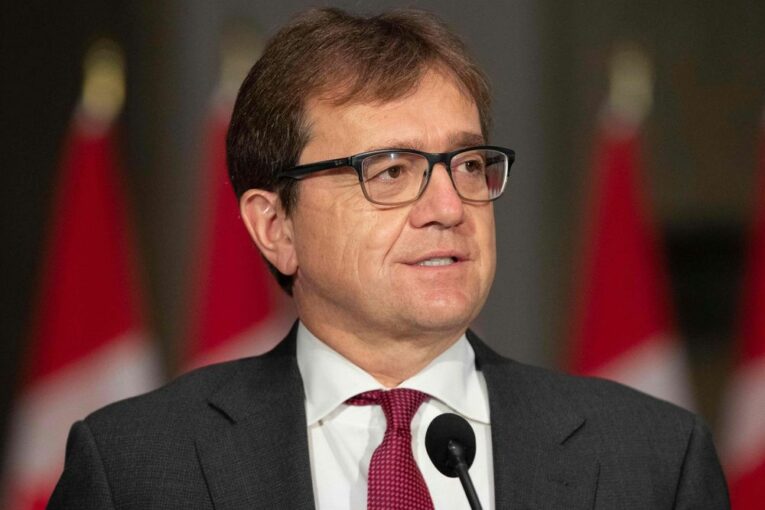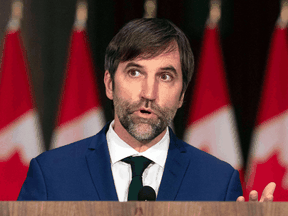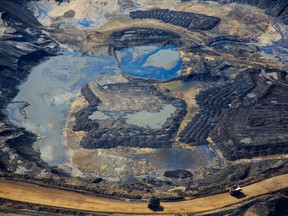
Canada’s new natural resources minister is no stranger to navigating the minefield of Ottawa’s explosive relationship with the Alberta government, having served as federal environment minister for the past two years.
Just a few days after taking over the new portfolio, Jonathan Wilkinson extended an olive branch of sorts to the province, but also showed he isn’t afraid to use it for a little prodding.
In an interview, the North Vancouver MP said he will reach out to Premier Jason Kenney, as the two governments “will be far more successful if we work together” on issues confronting the province’s largest industry.
The ongoing dispute over Line 5, a key pipeline that moves western Canadian oil to Central Canada through Michigan, is among his top priorities, as the state’s governor seems determined to shut it down.
Work on a new federal tax credit for carbon capture, utilization and storage (CCUS) projects is also continuing, something the oilpatch and Alberta have been pressing for this year.
Yet, Wilkinson, who is heading to the COP26 climate summit in Glasgow next week, isn’t afraid to say Alberta should consider dispatching a cabinet minister to Scotland — something the UCP government has declined to do.
Wilkinson would also welcome an emissions-reduction target included within Alberta’s updated climate strategy; the provincial environment minister has ruled that idea out.
And as he takes over the new federal job in charge of Canada’s natural resources, Wilkinson is a little perplexed at some of the reactions and negative headlines about his appointment, along with his replacement in the environment portfolio, Steven Guilbeault.
“I have tried to work very collaboratively and constructively with not only the oil and gas space, but with the government of Alberta,” Wilkinson said.
“So I’m not exactly sure where the headlines come from, but I will tell you that’s not the reaction I’ve heard from the industry.”
To be fair, much of the consternation voiced by the Kenney government this week was directed at Guilbeault, a former Greenpeace activist and oilsands opponent.

On Friday, Guilbeault spoke with reporters before heading over to COP26 and noted Canada is adopting the world’s toughest methane-reduction standards for the oil and gas sector, while setting a limit on overall greenhouse gas emissions from the industry.
“Frankly, no one else has done that either in the world, let alone oil-producing nations,” the new environment minister said.
Kenney expressed concern about the signal Ottawa was sending with Guilbeault’s appointment, although he noted his government has had “a constructive working relationship” with Wilkinson.
However, the premier was also clear Alberta has “constantly been surprised by ever-more ambitious federal targets and prejudicial policies which seem to be directed at impeding Alberta’s natural resource development.”
Asked about those remarks, Wilkinson wasn’t about to back down but seemed to be searching for common ground.
“We obviously have to be sensitive to how we actually seize economic opportunities and how we define pathways to ensure there is prosperity and jobs for folks that live in all parts of this country,” he said.
“Premier Kenney, ideally, will accept the science and will work with us collaboratively because, to be honest with you, we will be far more successful if we work together.
So I would reach my hand out to Premier Kenney and to his government to work in collaboration.”
We’ll soon see just how much collaboration takes place in areas such as CCUS. Alberta has pressed for $30 billion in assistance and incentives from Ottawa to promote carbon capture projects.
Much concern in Alberta focuses on how the energy transition will affect jobs and investment across a province that contains the world’s fourth-largest oil reserves.
Wilkinson pointed out the energy transition will take decades to occur and said there is a “continuing role for both oil and gas.”
The new natural resources minister said the focus is to reduce emissions, not oil and gas production, a point that industry players have made.
If oilsands operators can reach net-zero emissions by 2050 through major investments in technology — five producers are actively working together to reach that target — it will help Canada attain its climate objectives while protecting jobs.

These are the kinds of conversations that will likely take place at the United Nations climate conference.
While Alberta has sent officials to such summits for decades — former PC cabinet minister Ty Lund attended the 1997 Kyoto conference — Kenney, Environment Minister Jason Nixon and Energy Minister Sonya Savage will not attend the meeting in Scotland.
NDP Leader Rachel Notley, who attended the 2015 Paris conference as premier, said Alberta should be at COP26, meeting with officials from the Biden administration and other countries to, in part, talk about industry efforts to curb emissions.
“It is an incredible missed opportunity,” Notley said.
From his perceptive, Wilkinson said there is a role for provinces to play at such conferences.
“I’d say most provinces are sending a minister, but there are a couple of exceptions,” he said. “I think it would be very constructive for Premier Kenney or Minister Nixon or Minister Savage to be there.”
Alberta will be releasing its own updated climate strategy in the coming months. While Canada has said it will reduce emissions by up to 45 per cent by 2030, Nixon has ruled out setting an emissions target as part of the blueprint.
“Most provinces in the country do have a target,” Wilkinson added.
“Yes, a target would be very welcome and I think an openness to collaborating and seeing how we can reinforce the efforts of Alberta would be very welcome as well.”
Collaboration sounds swell, but this is a tricky minefield for both sides to navigate, with much at stake.
As one oilpatch CEO said Friday, a key question remains: Will Ottawa’s new natural resources minister choose the stick or carrot approach to get the province and industry on board with its plans?
Chris Varcoe is a Calgary Herald columnist.
You can read more of the news on source
